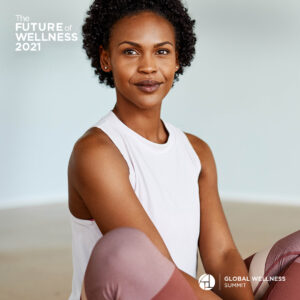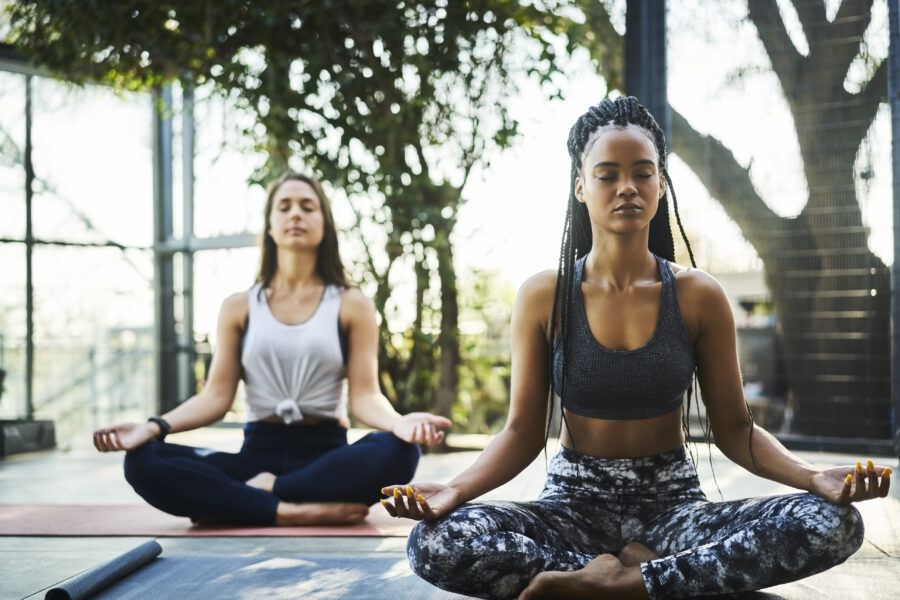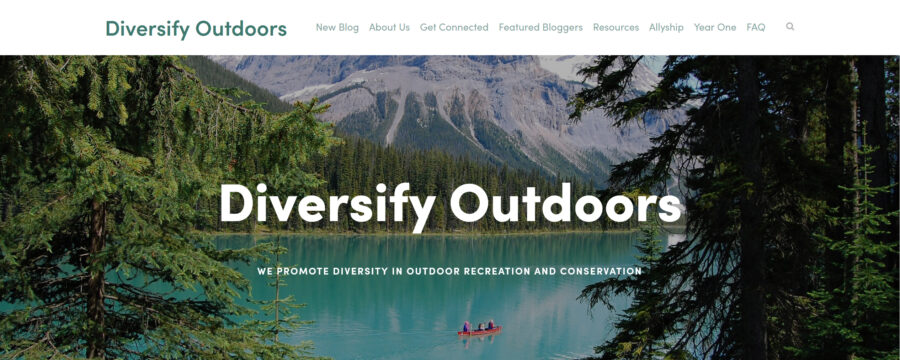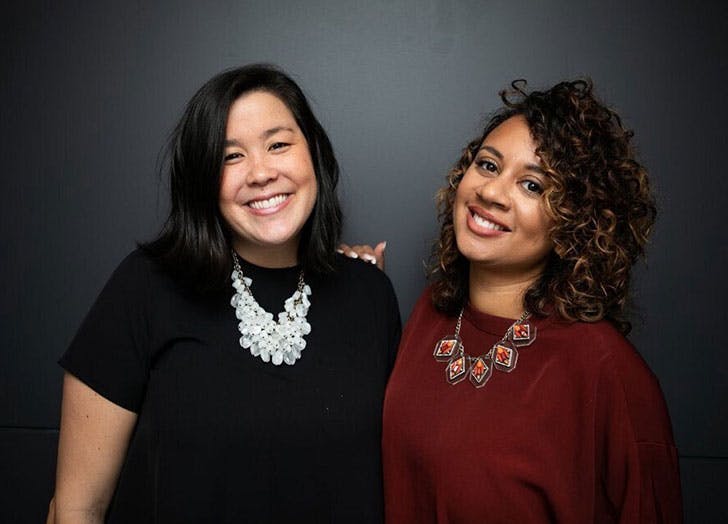
Trend #6
Adding Color to Wellness
Moving from optics to substance
By Tonia Callender
Introduction
I am writing this as a Black woman living in the United States who researches the wellness industry. However, many of my references to Black wellness apply to other minority groups and could apply to other nations. Also, by talking about overall industry trends, I’m obviously risking glossing over the exceptions. There are individuals and firms in the industry who appreciate and value Black wellness. But these exceptions only make the mainstream deficiencies more glaring because, through these exceptions, we see what is possible.
Graphic videos and the protests of last summer prompted many businesses across a wide range of industries to voice support for anti-racism. Major players in the wellness industry, including Lululemon, Nike and Goop, quickly issued statements of solidarity, affirming their commitment to diversity and inclusion.
Websites (i.e., Self, Well+Good, Shape) showcased Black wellness professionals and Black-owned businesses operating in the industry. Black and brown wellness companies witnessed an increased interest in investment and sales. And, for a few months, beauty companies’ posts emphasized darker skin tones.1, 2
However, for some firms, these professions of concern and support sparked a backlash. Companies like Misfit in Canada, Crossfit, Adidas and SoulCycle endured intense criticism for decrying anti-racism while ignoring discrimination within their own companies and communities. Many companies in the industry were accused of “virtue signaling” or “purpose washing”: professing support for a cause they did not really care about.
Showcasing Black Wellness – Optics without Substance
Statements of solidarity and showcasing Black wellness professionals may seem noble but will not create sustainable change in an industry that some have labeled racist. To enact meaningful change in the wellness industry, professionals need to openly acknowledge that
(1) the wellness industry perpetuates the false narrative that wellness is for white people and
(2) the wellness industry does not appropriately value Black wellness.
Wellness – whites only. As wellness grew into a trillion-dollar industry, companies and leading personalities promoted a false narrative that only products and services that cater to the needs of wealthier white people will improve one’s wellness. Companies and celebrities repackage other cultures’ wellness traditions and products, promoting them as luxurious and exclusive offerings. From food to physical activity, other cultures’ wellness practices only have importance when white customers and celebrities choose to value them. The message is: white wellness alone defines wellness. Even though some in the industry acknowledge this problem, they have shown little interest in rejecting this falsehood. The wellness industry continues to create wellness spaces and products that cater to the needs of white wellness consumers.
The wellness industry does not value Black wellness. Mainstream wellness companies ignore Black wellness consumers and rarely market to them. Wellness spaces, carefully tailored to support the well-heeled white consumer, fail to acknowledge that Black customers have different needs and values that will affect their experience. For example, wellness resorts that only employ white wellness professionals with offerings that support only white health and wellbeing do not care about my wellness. Once, I had an isolating week at a high-end wellness resort where I was the only Black person on the premises (besides the cleaning staff). Having the staff explain that if I had visited a month earlier, I could have seen a Black celebrity guest at the resort did not make me feel more welcome and does not value my wellness.
Under-valuing people of color in the wellness industry isn’t a problem that is just limited to consumers. The industry ignores the value that talented Black wellness professionals can bring to wellness spaces, limiting them to entry-level or maintenance positions. The few wellness professionals that do get hired often feel exploited by businesses that want to appear inclusive but provide them no voice, less money and little opportunity.3
Not My Wellness
Your wellness is not my wellness
Like many Black women, I mostly see wellness as a luxury that others pursue. I have the time, resources and interest to pursue wellness activities, but misconceptions and entrenched racial bias hinder my options. To me, wellness spaces, spas, studios and resorts seem designed for white people. When I do visit these spaces, instead of rejuvenated and relaxed, I often feel stressed and annoyed.
During my 50+ years, I have been repeatedly kicked out of pools, discouraged or openly barred from joining sports teams and classes, harassed by gym staff, faced frosty receptions from teachers and classmates, and had reservations suddenly disappear. I know that an approaching employee will more likely be challenging my right to be there than asking if there is anything I need. Over the years, the phrases have changed from “You can’t be here!” to “I’m sorry, but…” These encounters cause anxiety and stress that my white friends and neighbors cannot comprehend. For a Black woman pursuing wellness in white spaces, my experiences are unremarkable. We all endure it. But because of such micro-aggressions, it is not surprising that those of us who can find wellness spaces that support Black wellness will happily travel further and pay more to visit them.
Black people would greatly benefit from wellness techniques and practices. In fact, the wellness industry keeps telling me there are a wide range of wellness opportunities I should pursue, including nurturing my mental wellness, being out in nature, eating more nutritious foods, and becoming more physically active. However, for Black people, these wellness pathways can be strewn with unique obstacles, forcing us to navigate an alternative wellness landscape. If the wellness industry wants to showcase Black wellness, it needs to do so honestly, acknowledging that many of us face additional barriers to pursuing our wellness.
Your race matters: We have inequitable choices and unique barriers
Unequal wealth and the continued effects of residential segregation, racial bias and discrimination hinder Black wellness. Even though I am a researcher, I am tired of the depressing statistics, so I will only highlight a few.
- The median Black family wealth ($24,100) is only 15% of the white family median wealth ($188,200).4
- Almost a quarter of Black Americans are living at the poverty level.5
- A National Academy of Medicine study found that even after adjusting for insurance and other variables, Black people received worse health care than their equivalent white counterparts.6
Lack of access to good education, clean air, healthy food, potable water and good health care hamper our ability to protect and nurture our wellness. When compared to their fellow white citizens, Black Americans are more stressed and less healthy, but we have fewer choices.7 Racial bias and structural barriers continue to force unequal wellness options on Black people. Most importantly, for many of us, even the least costly wellness practices can be difficult to pursue.

When it comes to mental wellbeing, we have more stress and fewer options
Black people endure similar stresses to other Americans, but layered on top of these are the extra stress, anxiety and depression associated with racism. This takes its toll, and we are more likely than white people to be sad or feel overwhelmed, but we get less mental health care.8
Moreover, the techniques and practices that can support our mental wellness often are not as accessible. Ironically, some strategies for improving wellbeing will actually add to our stress; others are not an option. We often must think twice before performing stress relieving tasks others take for granted. Going for a walk, taking a class, or getting a massage can increase anxiety and stress. Long before jogger Ahmaud Arbery’s murder in Georgia, my son, a long-distance runner, followed some basic rules: run in groups or in very public areas in broad daylight and wear his school paraphernalia—all to decrease the chance that he would be harmed. Home from school due to COVID and unable to follow his rules in our suburban neighborhood, he stopped running.
Some mental wellness practices present even greater peril. I chuckle when I remember the well-intentioned advice of a white acquaintance who swore by cannabis to handle her stress and suggested I drive to neighboring Washington, D.C. to “buy some weed.” I am still wondering how she could be so oblivious to the danger that would place me in. Black people are over three-and-a-half times as likely to be arrested for marijuana possession, despite comparable levels of use and the decriminalization of the drug, and while African Americans make up 45% of D.C.’s population, almost 90% of the people arrested in the city are Black.9, 10
 We know “birdwatching-while-black” can be a dangerous pastime, but just experiencing nature can be a daunting endeavor.
We know “birdwatching-while-black” can be a dangerous pastime, but just experiencing nature can be a daunting endeavor.
Getting the physical, emotional and mental benefits of nature can be difficult for us. While almost 75% of people who participate moderately in outdoor recreation are white, only 8% are Black.11 Although programs and organizations such as Diversity Outdoors and Outdoor Thrive support African Americans who want to get more involved in outdoor recreation and experience nature, we are not perceived as nature enthusiasts. This misconception ignores how racial segregation and discriminatory housing policies have kept us out of parks and given us limited access to green areas.12 Black people, most notably those with children, are more likely to live in areas that have little or no access to green spaces. In the United States, 23% of white people and 68% of Black people live in urban, nature-deprived areas.13
Even when we have access to green spaces, racial hostility and harassment can keep us at home. Two weeks ago, I sent my son to visit a local park to walk on the trails and relieve his stress and anxiety. He returned earlier than expected to relate how a park ranger had followed him and harassed him, asking why he was there. Even more distressing for me, I didn’t sense any anger in his voice, only sad resignation.
For our physical activity, the playing field is not level
Even in the sports arena of wellness, where so many talented Black athletes have broken barriers, stereotypical views persist. Despite forming partnerships with Black athletes and celebrities that bring in millions of dollars from Black consumers, companies such as Nike and Adidas have ignored Black talent within their own companies, promoting few to management positions.14 While companies are happy to use images of Black athletes, it seems that Black coaches, trainers, instructors and managers are valued less.
Stereotypes and misconceptions continue to lead to the underrepresentation of Black people in a wide range of sports activities. Practitioners of some physical activities, such as martial arts, have embraced the concept that anyone can join the community and benefit from training and exercise, and these schools thrive in communities of color. However, other areas, such as ballet, lacrosse and swimming, perpetuate the false narrative that these activities are mainly for white youth. Although part of this is due to access, racism also plays a role. In dance, the vision of the white prima ballerina glorified by teachers and schools still helps to deter talented Black girls. Despite recent Olympic accomplishments by Black athletes, swimming remains dominated by white people. As an adult, I was determined to defend my membership rights to use our community pool, but when the head of the swimming program loudly proclaimed on the pool deck that my son could never learn the backstroke because Black people are physically incapable of it, I left. Luckily, I found a Latino attorney who spent his free time training local minority swimmers, and soon my son developed a strong backstroke.
Nutritious food can be hard to find
So often, Black people are accused of making the wrong food choices, but in reality, many of us have few choices about what we eat. Public policies and racial bias have concentrated Black people in neighborhoods where grocery stores are scarce and healthy food is hard to find. When designing a wellness workshop for underserved people in the metro D.C. area, I discovered that attendees were savvy shoppers who knew how to stretch their tight budgets, but they could not find any nutritious food in the few stores that existed within the community.
The claim that Black people don’t care about healthy food is belied by recent surveys that find that they are actually more likely than other consumers (by roughly 20%) to be concerned about chemicals in foods such as antibiotic use and artificial ingredients.15 To combat the problem of food deserts, we have relied upon community gardens for decades.
The Future
The wellness industry is at a crossroads. Wellness consumers are more diverse, and trailblazing Black entrepreneurs and wellness professionals will continue to add color to wellness. The wellness industry can make statements, or it can work to create substantive change through sincere, measurable and sustained steps.
 Black entrepreneurs and wellness professionals have been supporting Black wellness for years, creating their own spaces because the industry has ignored them. New entrepreneurs across a wide range of sectors are joining established Black companies, and despite obstacles ranging from lack of financial support to finding mentors, these talented wellness professionals will continue to change the wellness landscape. Rather than showcasing and exploiting them, the wellness industry should recognize their expertise and learn from them.
Black entrepreneurs and wellness professionals have been supporting Black wellness for years, creating their own spaces because the industry has ignored them. New entrepreneurs across a wide range of sectors are joining established Black companies, and despite obstacles ranging from lack of financial support to finding mentors, these talented wellness professionals will continue to change the wellness landscape. Rather than showcasing and exploiting them, the wellness industry should recognize their expertise and learn from them.
As the importance of diversity and inclusion grows, companies that value wellness for all racial groups and income levels will thrive. They will not only change the white wellness narrative; they will soon become its leaders. More people want diversity and inclusion, and embracing Black wellness will expand the consumer market and increase business innovation and profitability.16
By incorporating Black wellness needs into their wellness offerings, companies such as Fenty in the beauty sector and Shine in mental wellness have found substantial success. They recognize and value diversity and the importance of wellness for all consumers. As a Black consumer, I am supporting companies that reject the false narrative of white wellness. I live in a densely populated suburb with dozens of gyms and studios within a three-mile radius. Yet, I drive 30–40 minutes to The St. James, a wellness space that welcomes me. The St. James supports diversity, not only in its marketing materials and inspirational posters but also in its front line staff, managers, teachers and trainers and via its diverse wellness offerings. Wellness enterprises like The St. James that value diversity, respect my wellness needs, and work to support more equitable access, represent the future of wellness.
To facilitate this coloring of wellness, the wellness industry can acknowledge the role it plays in perpetuating the white wellness narrative. Changing the current wellness narrative allows non-white groups to also shape the narrative incorporating their wellness needs into services, spaces and products. Also, it should value Black wellness, not just our presence. This requires a deeper reflection than statements of support, links on a website, diverse marketing materials, and token board placements. Listen to what we are saying and recognize what we can do, rather than congratulating yourself that we are present. Finally, those wellness professionals who sincerely want to support wellness for all need to promote well-reasoned measurable policies and practices that make wellness affordable and accessible.
Endnotes
1 Ryma Chikhoune, “Black-Owned Wellness Brands Gain Traction,” WWD, July 15, 2020, https://wwd.com/beauty-industry-news/beauty-features/black-owed-wellness-brands-gain-traction-1203675532/.
2 Ad Age Staff, “A Regularly Updated Blog Tracking Brands’ Responses To Racial Injustice,” (An analysis of skin tones in social media posts by beauty brands to gauge beauty diversity indicated over a 120% increase in Black and brown skin tones. That number has decreased considerably since then.), Ad Age, accessed December 11, 2020, https://adage.com/article/cmo-strategy/regularly-updated-blog-tracking-brands-responses-racial-injustice/2260291.
3 Kelly Gonsalves, “Wellness Doesn’t Belong to White Women,” New York Magazine, August 11, 2020, https://www.thecut.com/article/wellness-doesnt-belong-to-white-women.html.
4 N. Bhutta, A. C. Chang, L. J. Dettling, and J. W. Hsu, “Disparities in Wealth by Race and Ethnicity in the 2019 Survey of Consumer Finances,” FEDS Notes, Board of Governors of the Federal Reserve System, September 28, 2020, https://www.federalreserve.gov/econres/notes/feds-notes/disparities-in-wealth-by-race-and-ethnicity-in-the-2019-survey-of-consumer-finances-20200928.htm.
5 “Profile: Black/African Americans,” Office of Minority Health, U.S. Department of Health and Human Services, https://www.minorityhealth.hhs.gov/omh/browse.aspx?lvl=3&lvlid=61.
6 Anagha Srikanth, “After Accusing Hospital of Racist Treatment, Black Doctor Dies of COVID-19,” The HILL, December 24, 2020, https://thehill.com/changing-america/respect/equality/531633-after-accusing-hospital-of-racist-treatment-black-doctor.
7 D. Bowen Matthew, E. Rodrigue, and R. Reeve, “Time for Justice: Tackling Race Inequalities in Health and Housing,” The Brookings Institution, October 19, 2016, https://www.brookings.edu/research/time-for-justice-tackling-race-inequalities-in-health-and-housing/.
8 “Mental and Behavioral Health – African Americans,” Office of Minority Health, U.S. Department of Health and Human Services, https://minorityhealth.hhs.gov/omh/browse.aspx?lvl=4&lvlid=24.
9 “A Tale of Two Countries: Racially Targeted Arrests in the Era of Marijuana Reform,” ACLU Research Report, 2020, https://www.aclu.org/report/tale-two-countries-racially-targeted-arrests-era-marijuana-reform.
10 Paul Schwartzman and John D. Harden, “D.C. Legalized Marijuana, But One Thing Didn’t Change: Almost Everyone Arrested on Pot Charges Is Black,” Washington Post, September 15, 2020, https://www.washingtonpost.com/local/legal-issues/dc-marijuana-arrest-legal/2020/09/15/65c20348-d01b-11ea-9038-af089b63ac21_story.html.
11 “2019 Outdoor Participation Report,” Outdoor Foundation, 2019, https://outdoorindustry.org/resource/2019-outdoor-participation-report/.
12 J. Grove, D. Locke, B. Hall, and S. Pickett, “Residential Housing Segregation and Urban Tree Canopy in 37 US Cities,” Preprint, January 2020.
13 Jenny Rowland-Shea, Sahir Doshi, Shanna Edberg, and Robert Fanger, “Confronting Racial and Economic Disparities in the Destruction and Protection of Nature in America,” Center for American Progress, July 21, 2020, https://www.americanprogress.org/issues/green/reports/2020/07/21/487787/the-nature-gap/.
14 Ross Kerber, Helen Coster, and Arriana McLymore, “U.S. Companies Vow to Fight Racism But Face Critics on Diversity,” Reuters, June 10, 2020, https://www.reuters.com/article/us-minneapolis-police-companies-insight/u-s-companies-vow-to-fight-racism-but-face-critics-on-diversity-idUSKBN23H1KW.
15 “African American Spending Power Demands That Marketers Show More Love and Support for Black Culture,” Nielsen, September 12, 2019, https://www.nielsen.com/us/en/press-releases/2019/african-american-spending-power-demands-that-marketers-show-more-love-and-support-for-black-culture/.
16 Vivian Hunt, Lareina Yee, Sara Prince, and Sundiatu Dixon-Fyle, “Delivering Through Diversity” (The McKinsey group’s most recent diversity study found that more diverse companies’ profits were more likely to outperform their peers, while those with the lowest rates of diversity were more likely to underperform.), McKinsey & Company, January 18, 2018, https://www.mckinsey.com/business-functions/organization/our-insights/delivering-through-diversity.
Download this 2021 trend and receive the 2021 mid-year update as well. The 2022 Future of Wellness global trends report is now available. View the latest trends. Subscribe to our mailing list and receive the bi-weekly TRENDium, a compendium of the trends impacting the multi-trillion dollar global wellness economy featuring the latest news and insights. Sign-up to receive the TRENDium.
